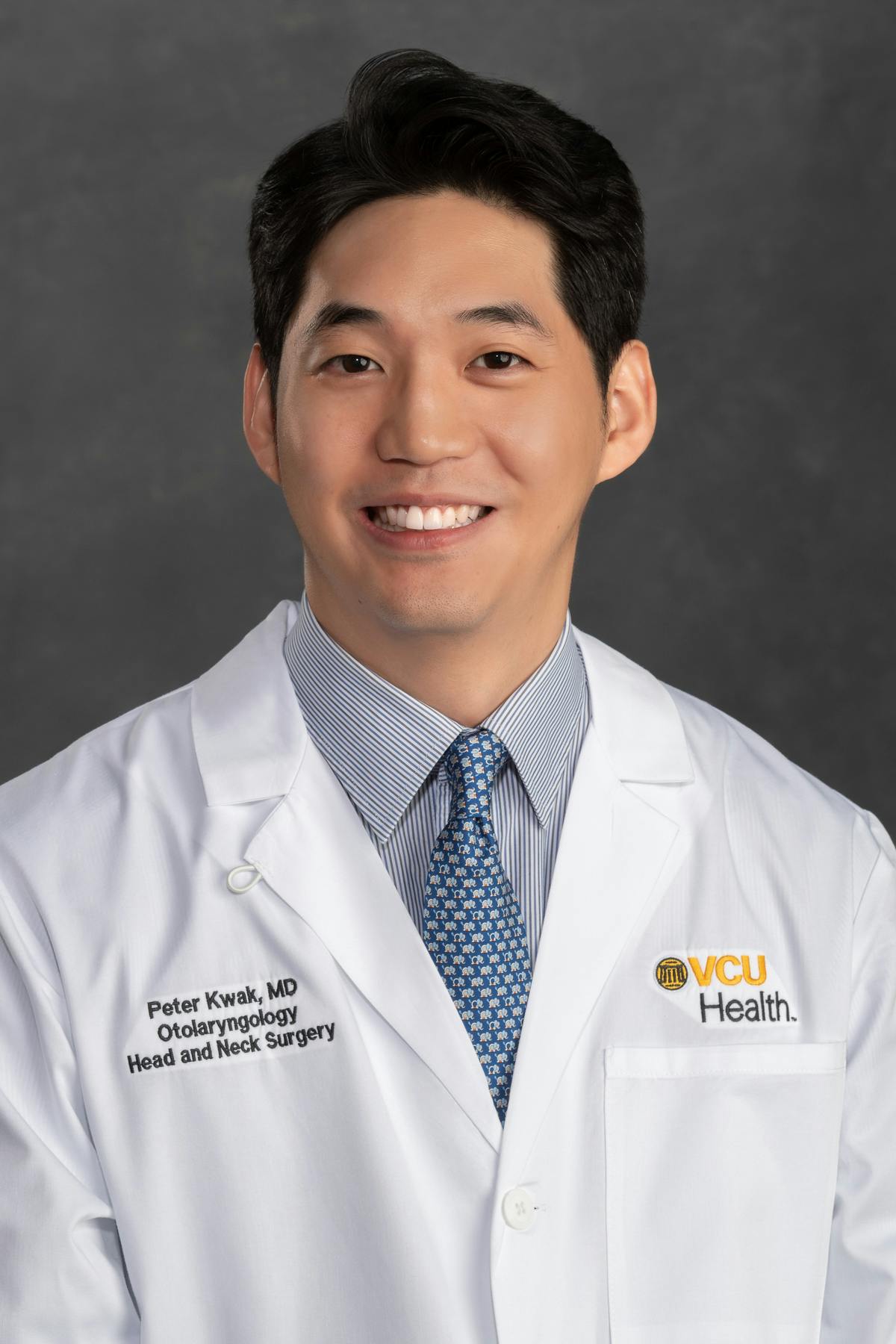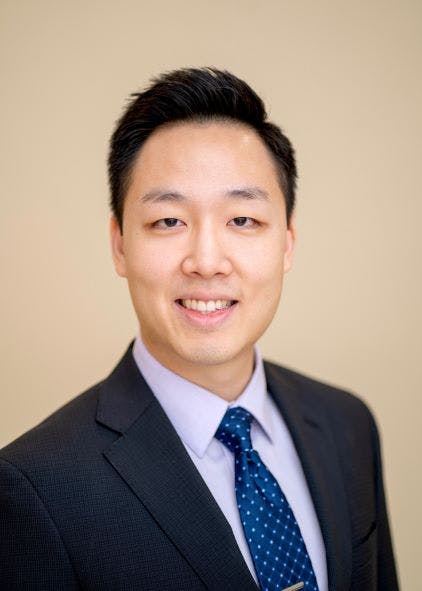Local Tissue Advancement: Reconstructing Superior Helical Rim Defect and Exposed Ear Cartilage After Mohs Surgery
Transcription
CHAPTER 1
This is Dr. Thomas Lee.I work at Virginia Commonwealth Universityin the Department of Otolaryngology.And the case we're gonna discuss today is a patientwho presented with basal cell carcinoma of the earinvolving the superior helixand the upper 25% of the ear.And this patient has significant historyof wearing cochlear implant hearing aids as well as glasses.So, our goal of this surgery is to restoresuperior helical rim so thathe can rest his glasses as well as hearing aids.The surgical steps in this case,we will first examine the defect when he's asleep.And observing the defect,we noticed that along middle anterior helixthere are signs of gross cartilage exposure.And unfortunately as a result of thatwe cannot apply skin graft.So, the decision is then made to performlocal tissue advancement usingthe skin from the concha bowlas well as remaining triangular fossa region.Once we had recruited sufficient skin flap,we then positioned the cartilageto desired location for superior helical rim.And once the cartilage is positionedin the desirable location,we then close the skin so thatthe entire cartilage is buried.And the last step is to quilt the cartilageso that we do not have hematoma and cauliflower deformity.
CHAPTER 2
So this gentleman had a basal cellinvolving the superior helix,just had Mohs yesterday.The interesting about this patientis that he has cochlear implant, so we can't usemonopolar cautery.Let's just get the bipolarand then we'll start buzzing all thisso that we can seewhat we got going on.Okay, suction, please.You want a Frazier?Oh yeah, that'd be fine.Yeah, Frazier might be better.Yeah.So looking at this,ourfirst priority is tocreate a ledge here.Because he wears glasses and hearing aids.And initially, I thought we could do something more complex.Doing helical rim advancement kind of thing,but in this case I don't think we need to.It's more this that I'm worried about.But this is bare cartilage.And I'd like to preserve thisbecause this is part that -if you cut this out,it will start sinking in.So cosmetically,not ideal.Skin graft might take on that.It might take, so we could try that.Fitting if there's any role inmoving into the skinto bury the cartilage,is one thought that I have.You have a Frazier suction?Yep.Can excise some of thisexcess to help us fold the ear in the right position.I tend to do something like that.But there's excess.Like right in the middle here.You have a local up, please?1% lido with epi.Yeah.Just gonna lift this,drape it, maybe drape it over this.So it looks like you're gonna have to excise some of that.I'm not sure if it'll move that much,but it might moveenough to provide some perichondrium.Another option is -can raise a skin flap here.I do think we need to excise this portion.What about -this part?If you take this out,could that just fall in there?It will.But I'd prefer to preserve this rim here though.So this is -when you harvest ear cartilage,you want to preserve this rim.This ledge that sticks out of the head.Because otherwise it will look collapsed.So when I harvest the ear cartilage,I kind of get it like this.This is the ear that we get.Can come all the way out toPAC here and go down the scale.So you can get an ear curl like that.But then I always try to preserve thisto give it projection that we need.I think this might actually move a little bit.So you have local, please?Yep.I think we can lift the skin up.Maybe on this side.And maybe even some of this.Local.Do you have a marking pen?So I think -it's gonna be here.So here to here.So I want the rim to be…
CHAPTER 3
So what I'm doing is I'm getting -I'm raising this perichondrium on this side,so I'm gonna use it to cover that up, the cartilage.I don't know what cartilageI'm gonna sacrifice right now.So I'm gonnaraise thiswithout messing with the cartilage yet.A little bit of skin.Excise this.You have an elevator?Like number nine or a freer.I got a freer.All right.This part's coming up pretty easily.I don't want to go into the rim, butjust enough to get this mobilized.So I'm gonna leave the posterior aspect of itattached for blood supply.This is actually cutting.They are, wow.Shockingly, yes.I can do the cartilage right there.There we go.Okay now, I'm gonna raise this side.Some cuts on the cartilage.I'm noticing.Like right on - elevate that.Mhm, yep.Nice.Mhm.I'm thinking let's go that way, yeah?Mhm.It's tethered right there.Okay.So that's out.A little bit, I think.Yeah,that looks better.So at least we can pull this up and over.I'm gonna elevate a little bit more here.And the main goal is to get that cartilage covered up.What kind of sutures do we have up?I have...I will use a 4-0 Vicryl first.Okay.But now we need to figure out how are we gonna...I'm sorry?The smaller of the two needles?Just regular -whatever needle's fine at this point.Okay, so I'm gonna start by just tacking this.We're gonna start wedging stuff out.This needs to be wedged out it looks like.So whatever I can't cover with skin,I'm gonna wedge out.Because it probably won't.It'll probably get infected.This skin I'm gonna raise.Lift it up and over.So the posterior aspect of the cartilage is all intact.You want come around that bend there, Kevin?Right there, mhm.Yeah, see if you can lift it.Mhm.Yeah.Could I have an Adson as well, please?Yeah.Mhm. Thank you.Yep.Yep.Nice.That's okay.So leave that for now before I take it outin case we need itfor the helical rim reconstruction.We don't probably need this at this point.Okay so,first step is anchoring this.Notice that...Okay, Vicryl.
Do you have some sutures scissors, please?Okay.Okay well we'll see where we need tocut out theexcess cartilage.Do you have a different needle driver, please?This is slipping.Do you have Bovie?Oh no, you can't use a Bovie.15 blade, or?I have a 15.Yeah, 15's good.Gonna raise this part.There is cochlear implant stuffaround here somewhere so we need to bemindful of how muchdissection we're doing.Push.Iris back.Just gonna see if there's a way -I don't like how this is rolling like this.I'd like to release it back here,to realign that.That's better.Skin's getting folded into it.Mhm.That's actually not bad.Let's see how this looks.I don't like that.Let's take it out.Mm, came through.We can leave it.Let's go through this.Can I get a freer?Gonna unroll that a little bit more.Just roll this out.Iris scissors.Trying to lift the skin here so that it can beadvanced backposteriorly.Cover up all this cartilage, there we go.It's released.Can you grab that little?So I noticed that hereis gonna be a little bit tight.That's gonna be okay.Right here.There's more tethering.It's okay.Gonna raise this anterior skinso that it can slide back over.Do we have any skin hooks?Double? Double would be nice,yep, right there.All right, this is redundant cartilage.This is redundant cartilage.15 blade.Excise this part. We don't need this anymore.Once again, preservingthe ledge that trajects out laterally.Okay.Just save that, please.That's good.That's good.I think we have enough skin to close.I'm gonna overlap this thing there.Could we have the 15 blade back?A fresh one.Just gonna -so this is, I'm noticing, rolls out too much.I'm gonnamake it fall back.Like kind of removing some of this, they can collapse down.Here you go.Knife back.That's better.Stack this on top of this segment.It's cracking.Mhm.Looks like it's gonna close.Stabilize up here a bit more.This cartilage is getting -flimsy up here.This is clear PDS, correct?Yes.All right.I don't like that too much.Here we go.Yep.Okay, come on out with that for a second.Let's see what we got going on here.Mhm.Do you have the iris scissors, or?A little bit tethered right there.That's it.Bipolar that right there.Mhm, just right there.Right there, mhm.Mhm, good.Good, okay.
CHAPTER 4
Okay, do you have 4-0 chromic?Mhm.And then there's gonna be a ledge.The ledge is really the key with thisfunctional aspect of this -him wearing glassesand hearing aids.Let's see where everything lines up.I probably have to quilt this down, too.Do you have something on a SH needle?Like a 2-0 or a 3-0 chromic,on a SH. For chromic, yeah.We got 2-0, 3-0, and 4-0.Let me get a 3-0 on a SH. Yep.I think skin-wise, it's gonna be okay, anteriorly.Great.I think I have to cut that out to roll it back.Mhm.It seems to be with the stump down.If I just tack this. Yep.I might be okay.All right, you have a -let me take a 4-0 Vicryl in a second, please.I'm might just drape the perichondrium stuff down.Just leave the skin.Skin closure.Just gonna spread the skin flap out firstand then we'll figure outhow to remove the skin on the backsideso that ear will fall back towards the head more.Scissors back.Can I see some irrigations?Not bad.He's bucking.Yeah, do you have iris scissors, again?Something needs to happenback here -to help it fall back.I'm trying to set it back.You see how it's rolling in like this?I want it to roll backkind of like this.Oh.You know what I mean?I don't like how it's folding like this.I want to have it fold back.So I might have to cut...Yeah, kind of like, I might have todo something for it to pull back.Mhm, he's bucking.Again?Yep.It's not bad I guess.Let's see if there's something else we can do.You got the chromics?Yep.I'm gonna just quilt that one and see.Why is it doing that?I'm thinking in my head.Here's the needle back. Yep.I'm trying to think if there's a benefit inmaking a cartilage cut.Collapsed down.I don't know.I feel like something like thisto stabilize it more in the middle. Yeah.It's like totally clamped, anteriorly.True.True.That's actually not bad. Yeah.I feel like, I mean, he just needs to have his ledge.Yeah, you're right. All right, let me get a...Like if it's pooching out,it's fine as long as it...Yeah, just holds everything up.Let me get a Vicryl.The skin is not great.Mhm.Mhm.All right, it's not bad. Yep.Do you have a 5-0 fast? Yep.Kevin will take it, and then,we'll close the backside.Here you go, sir.Mhm.Scissors back.Do you have one more 5-0?- [Surgical Assistant] Oh, we need another 5-0 fast.How about a 5-0 chromic?Do they have a 5-0 chromicinstead of a fast?5-0 chromic is okay?Yeah, that's good.Mhm.There's skin.Mhm.Okay, so we're gonna close the skin here.I'm using 5-0 chromic.And once you get the skin closedand the cartilage covered up,you're gonna quilt this downso we don't gethematoma formation underneath it,which would causecauliflower deformity.Suction right here.Okay, so all the cartilage is covered,which is good.It's kind of the hardest partwas just getting all the cartilage covered.Where is the skin graft going?Well we're just doing Integra.Oh. It's Bilayer Integra.On this guy?Mhm.Oh yeah, we do need a TPS drill.And round burr for that one.Round diamond or cutting?Cutting, please. Okay.Here you go.Iris scissors.Thank you.
I'm trying to see how to quilt thisso that I don't take everything apart.Yeah.Because his skin basically re-draped overwhat we had moved things to, actually it looks pretty good.I don't like how it's rolling but again,our goal is to mainly just have something sit there.Maybe,just something like this.And quilt this.So I want to go along the base of thisso that it kind ofsticks down.Quilting it to minimize hematoma formation here.How long do you want him to waitbefore he wears the implant?Is he? Oh, like at least a week.Okay.Better if it's two weeks or something like that.I wonder if she put something there.Like a Steri's or something,because I don't want it setting, something directly over that.Yeah.That's just asking for skin to open up.Kind of want it way down there.I think we lifted this.Do you have a Dermabond?Irrigation?Let me get one more chromic, please.Three, cutting.Three?Four. Four would be fine.Four coming.It is pretty small.Pretty small.You know what, let me see that chromicone more time, please. I'm sorry.So basically moved the skin from hereand skip our regionout laterally.You kind of go inside the - yeah.Do you want him to keep doingantibiotics after?Skin? Like to go home, yeah.Sure. Something with skin coverage.






